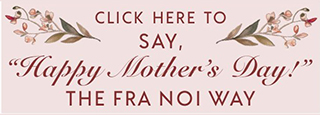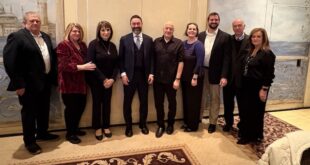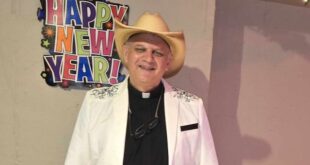Ok, you can stop crying now. I know our emotional families cry at weddings. As a genealogist, I only cry when I can’t find a marriage date! It is one of the tricky pieces of information to unearth, with its own special brand of problems that we must be prepared to deal with.
The three most basic pieces of genealogical information are the birth, marriage, and death dates. Birth and death are easier to find, because there are better clues. We remember celebrating birthdays with relatives. A milestone birthday party is usually very memorable, so our photo albums give us a clue how old Nonna was. We have funeral cards from when they died, or the death notice from the newspaper. The dates of birth and death may be carved on the gravestone. The Social Security Death Index has dates of birth and death for 60 million deceased Americans. There are many clues that make it easier for us to find the birth or death certificates.
The marriage date is missing from all of the above, and is not always easy to find, especially for someone who is long gone. Other than 25th or 50th anniversaries, we don’t all get together to celebrate (or remember) marriages of long ago. So how do we find the date of marriage of our ancestors, our aunts and uncles, or anyone else?
If any of you have written to a state or county office for a copy of a certificate, you need to tell them the date of the event, whether it is a birth, marriage or death. Most of the time, we do not have the certificate number. Let’s face it, if we had the certificate number, we’d probably already have a copy of the certificate! So we have to give them some basic information for them to try to find the certificate in their files.
If you don’t have a date of the event, it is not easy to find, and the governmental clerk may decide to send you a form saying “could not find” and keep your money! I had a lot of those forms back when I started my research. So if we don’t have the foggiest idea when Nonna and Pop got married, you may be wasting your money writing to the county and asking for a copy of their marriage license, from, oh, I don’t know, some time in the 1930s! You need to narrow it down to make it easier for them, or they might not try to find it.
Believe it or not, the main method you need for “guess-timating” a marriage date is to apply moral teachings. Huh?? Yes. It’s common sense, really. Today, it’s very different, but when looking for the marriages of people born 100 years ago, there was a moral code that was very important to them and their parents.
Not every Italian was Catholic, but the vast majority of them certainly were. Catholic teaching was very clear on the subject of procreation outside of marriage. So the vast majority of our ancestors married before the birth of their first child, and most of the time more than nine months before the birth of their first child. These days, all bets are off. But we are looking for marriage dates of people who are no longer with us. They were a lot more concerned about the social and religious ramifications of producing children outside the bonds of holy wedlock.
So what does this mean for the genealogist? Well, it is helpful to know who the oldest child is in a family and the birth date of that child. Now you can backtrack a few months to start searching for the marriage of the parents. If you are working with Italian marriage record microfilms, you should just start searching in the year the first child was born, and work backward.
I can speak for Italian marriage records. There are a small percentage of cases where a baby is born out of wedlock. On the birth records of most of those, it is clearly noted that the parents are not legally married. You should use this information to help narrow down the marriage year as well. There might also be a note written in the margin of the birth record that this child was made legitimate by the marriage of his parents at some later date. This is quite unusual but it does happen.
So how far back do you look? You might happen to know that Nonna was 20 when her first child was born, let’s say in 1924. So you look at 1924 marriages. Nothing. 1923. Nothing. 1922, 21, 20, 19. How far back do you look? Well, in Italy, you find a lot of marriages where the bride is 18, 17, 16 and sometimes even 15 years old. There are the extremely rare 14- and 13-year-old brides. In those cases, usually the father of the bride is deceased and it might have been a matter of survival for the surviving girls to marry and be supported by the husband rather than an impoverished mother. But I think I can safely say I do not have any marriages of anyone under the age of 13 in my files. The men married a little older. It is extremely rare for a 16- or 17-year-old boy to get married. So keep looking back until your bride is 12 years old or your groom is 16.
Uh oh, I still didn’t find it! Does that mean they never married? Did Nonna and Pop live in “sin”? Not necessarily. They might have married in a neighboring town. Typically in Italy, the marriage would take place in the town where the bride’s father lived. (This is not always the town where the bride was born.)
If you can’t find the marriage in the marriage records, check the “pubblicazioni” which are the marriage banns. These records might list the marriage and the name of the town where it is going to occur. They had to post the banns on the church door of both towns, presumably to give both groups of people the chance to halt the wedding if need be.
Marriages were sometimes a matter of practicality in Italy as well. If a woman is widowed, it is not uncommon for her to marry again 3 to 4 months after the death of her husband. To us, this seems very insensitive to the memory of the dear departed. But in a time and place where women did not work outside the home, she needed a husband for financial support.
Frequently, but not always, she would be matched up with a widower. The men also remarried fairly quickly after their wives died. They needed caregivers for the kids while they were off working. So when looking for the second marriage of one of your Italian ancestors, don’t be surprised that they married again in the same year as the death of the first spouse.
Next month, we’ll talk about American, and in particular, Chicago, marriage licenses, and the pitfalls of finding marriage dates of living people.
 Fra Noi Embrace Your Inner Italian
Fra Noi Embrace Your Inner Italian






